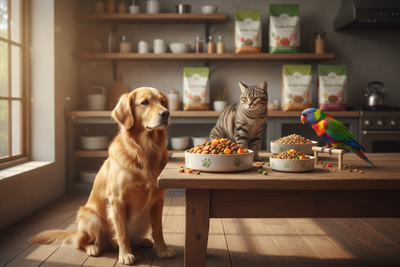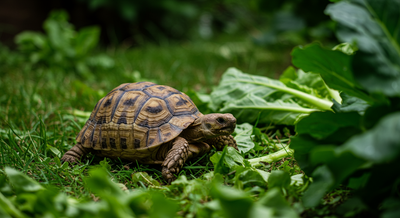
Bearded Dragons: Unraveling the Mysteries of Their Size.
Bearded dragons are captivating reptiles that have captured the hearts of many due to their unique appearance and gentle demeanor. Originating from the vast deserts of Australia, these creatures have become popular choices as pets for enthusiasts seeking a low-maintenance companion. One intriguing aspect that often piques curiosity is the growth potential of these reptiles. Understanding the factors that contribute to the size of a bearded dragon is essential for providing optimal care and ensuring their well-being. Throughout this guide, we will explore the various elements that influence the size of these fascinating creatures, including genetic factors, environmental conditions, and age. By the end, you will gain valuable insights into the typical size range that bearded dragons can achieve, empowering you to be a knowledgeable and dedicated caregiver to these remarkable reptiles.
Factors Influencing Size
Genetics and Species
When it comes to the size of an animal, genetics play a significant role. Different species have inherent genetic traits that determine their maximum potential size. For example, certain dog breeds are naturally larger than others due to their genetic makeup.
Diet and Nutrition
The diet and nutrition of an animal directly impact its size. Adequate nutrition is essential for growth and development. Animals that are malnourished may have stunted growth, while those with access to a rich and balanced diet tend to reach their full size potential.
Enclosure Size and Habitat
The size of an animal's enclosure and the quality of its habitat can also influence its size. Animals that have limited space to move around may not develop strong muscles or reach their full size. Conversely, animals in spacious, enriching environments are more likely to exhibit normal growth and development.
In addition to genetics, diet, and enclosure size, several other factors can influence the size of animals. One such factor is age. In many species, animals go through growth spurts during specific stages of their life. For instance, juvenile animals typically experience rapid growth compared to adult individuals.
Moreover, environmental factors such as temperature and climate can impact an animal's metabolism and, consequently, its size. Animals in colder climates may need to consume more calories to maintain their body temperature, which can affect their overall size.
Social interactions within a species can also play a role in determining size. Dominance hierarchies and competition for resources may result in some individuals having better access to food, leading to larger sizes compared to subordinate members.
Furthermore, the availability of resources in the wild, such as food availability and predation pressure, can influence the size of a population. Limited food resources may result in smaller individuals due to competition, while reduced predation pressure can allow for larger sizes.
Overall, the size of an animal is a complex interplay of genetic, nutritional, environmental, and social factors that collectively shape the growth and development of individuals within a species.
Additional Factors Influencing Size
Apart from genetics, nutrition, habitat, age, and social dynamics, there are other significant factors that contribute to the size variations observed in animals.
-
Health and Disease: The health status of an animal can impact its growth rate and size. Diseases or health conditions that affect nutrient absorption, metabolism, or overall well-being can hinder proper development and lead to smaller sizes.
-
Reproduction: Reproductive activities can also influence the size of an animal. In some species, individuals allocate more resources to reproduction, which may affect their overall size or growth rate.
-
Exercise and Activity Levels: Physical activity and exercise play a crucial role in muscle development and overall size. Animals that engage in regular physical activity tend to have better muscle tone and size compared to sedentary individuals.
-
Hormonal Factors: Hormones play a vital role in regulating growth and development. Imbalances or variations in hormone levels can impact an animal's size, especially during critical growth periods.
-
Genetic Mutations: Occasionally, genetic mutations can lead to abnormal growth patterns or variations in size within a population. These mutations may result in unusually large or small individuals compared to the typical size range for the species.
Understanding the intricate web of factors that influence animal size is essential for conservation efforts, captive care, and overall species management. By considering these diverse influences, researchers and conservationists can better address the needs of different species and promote healthy growth and development in animal populations.
Average Size of Bearded Dragons
Size Ranges for Juveniles and Adults
Bearded dragons, also known as Pogona, are fascinating reptiles that undergo significant growth as they transition from juveniles to adults. Understanding the size ranges for these stages is essential for every bearded dragon owner.
As hatchlings, bearded dragons are incredibly tiny, typically measuring around 4 inches in total length. This small size often surprises first-time owners who may not anticipate how quickly these little creatures grow. However, with proper care, nutrition, and a conducive environment, juvenile bearded dragons quickly flourish.
As they mature into adults, bearded dragons experience a remarkable growth spurt. Adult bearded dragons usually reach an impressive size, ranging between 18 to 22 inches in length, tail included. This significant increase in size is a testament to the proper care they receive and the healthy lifestyle they lead.
Comparing Bearded Dragons with Other Reptiles
When it comes to reptile companionship, bearded dragons stand out for their unique size and characteristics. Unlike the petite leopard geckos or the slender ball pythons, bearded dragons fall into the medium to large-sized reptile category. Their sturdy build, coupled with the iconic beard and spiky appearance, sets them apart from their reptilian counterparts.
Additionally, the manageable care requirements of bearded dragons make them a favorite among reptile enthusiasts. While they may be larger than some reptiles, their friendly demeanor, relatively simple dietary needs, and fascinating behaviors make them an excellent choice for both novice and experienced reptile keepers.
The average size of bearded dragons showcases their remarkable growth potential and unique characteristics. Whether you are mesmerized by their growth trajectory or enamored by their charming personalities, bearded dragons continue to captivate the hearts of pet owners worldwide.
Factors Influencing Bearded Dragon Size
Several factors influence the size of bearded dragons beyond just age. Genetics play a crucial role in determining the potential size a bearded dragon can reach. Some bloodlines may produce larger dragons compared to others. Additionally, diet and nutrition play a significant part in the growth of bearded dragons. A well-balanced diet that includes a variety of insects, leafy greens, and occasional fruits ensures that your bearded dragon receives the necessary nutrients for optimal growth.
Environmental factors also impact the size of bearded dragons. Enclosure size, temperature gradients, UVB exposure, and overall husbandry practices can affect the growth rate and size of your pet. Providing adequate space for exploration and basking, along with a suitable UVB light source, contributes to the healthy development of your bearded dragon.
Health Considerations
Monitoring the size and growth of your bearded dragon is essential for ensuring its overall health and well-being. Sudden changes in size or stunted growth can be indicative of underlying health issues. Regular veterinary check-ups, proper hygiene practices, and a keen eye on your pet's physical development are vital in maintaining a healthy bearded dragon.
By understanding the various factors that influence the size of bearded dragons and actively monitoring their growth, you can provide the best care possible for these captivating reptiles. Their size, coupled with their endearing personalities, makes bearded dragons a delightful addition to any reptile enthusiast's collection.
Maximizing Growth Potential
Best Practices for Promoting Healthy Growth
Maximizing growth potential is crucial for long-term success. To achieve sustainable growth, businesses must implement various strategies and best practices. Some of the best practices for promoting healthy growth include:.
-
Market Research and Analysis : Conducting thorough market research and analysis is essential to understand market trends, customer preferences, and competitors. This information helps businesses identify growth opportunities and make informed decisions.
-
Customer Relationship Management : Building strong relationships with customers is key to driving growth. By focusing on customer satisfaction, businesses can increase customer retention and loyalty, leading to sustainable growth.
-
Innovation and Adaptability : Embracing innovation and staying adaptable to changing market conditions is crucial for growth. Businesses that continuously innovate their products, services, and processes can stay ahead of the competition and attract new customers.
-
Strategic Partnerships : Collaborating with strategic partners can help businesses expand their reach, access new markets, and drive growth. By forming strategic partnerships, businesses can leverage each other's strengths and resources for mutual benefit.
Avoiding Common Mistakes
While implementing growth strategies, businesses must also be mindful of common mistakes that can hinder growth potential. Some common mistakes to avoid include:.
-
Lack of Planning : Failing to create a comprehensive growth plan can lead to inefficiencies and missed opportunities. Businesses should set clear goals, develop actionable strategies, and regularly review their progress.
-
Ignoring Customer Feedback : Neglecting customer feedback and failing to address customer concerns can damage relationships and hinder growth. Businesses should actively seek and respond to customer feedback to improve their products and services.
-
Overlooking Competition : Underestimating or ignoring competitors can put businesses at a disadvantage. It is essential to monitor competitors, analyze their strategies, and differentiate your offerings to stand out in the market.
-
Resisting Change : Being resistant to change and clinging to outdated practices can impede growth. Businesses should be open to new ideas, technologies, and market trends to stay competitive and drive growth.
By following these best practices and avoiding common mistakes, businesses can maximize their growth potential and achieve long-term success in today's dynamic market landscape.
Conclusion
Bearded dragons can grow to be quite large, with adult males reaching lengths of up to 24 inches and females slightly smaller at around 20 inches. Proper care, diet, and habitat are essential in ensuring that these fascinating reptiles can reach their full size potential and live a healthy, fulfilling life. Remember to provide adequate space, UVB lighting, and a balanced diet to help your bearded dragon thrive and reach its maximum size.





